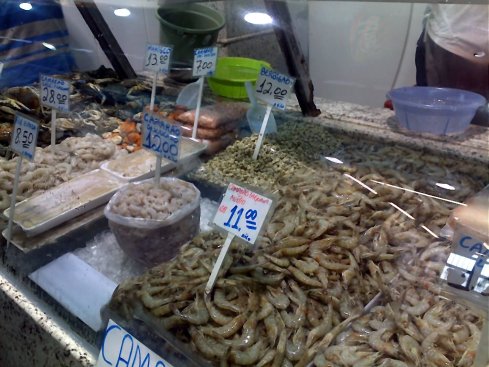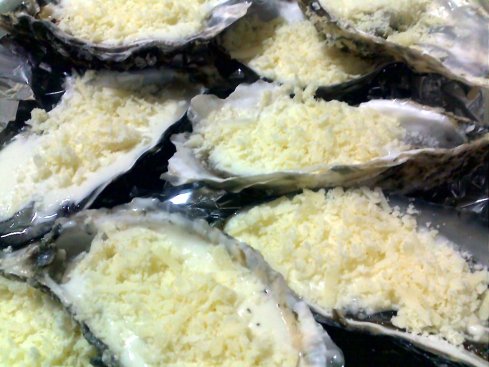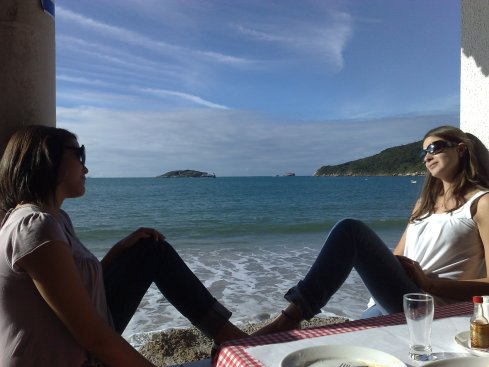Another post related to Florianópolis, but that’s only because I’ve just spent the last weekend there (and it was an extended one, since September, 7th is a holiday – Independence Day).
On our first night, so I’ve told you, we had some fresh oysters for dinner. But no, that was not all. Considering the variety of seafood you can find in the city, it’s an island after all, oysters alone wouldn’t be enough. Thus, Manuela (my sister-in-law) prepared an extra treat for us:
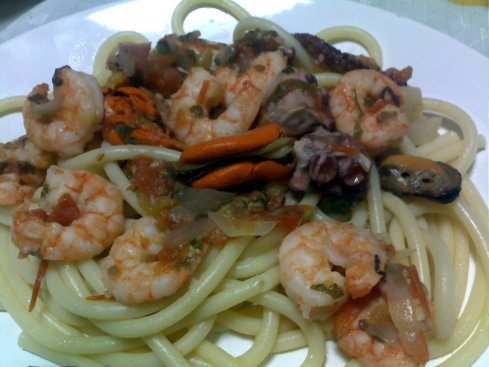
Bugatini with prawns, octopuses (octopi?) and mussels
The shellfish were cooked on a garlic, onion, tomato base to which some chopped scallion and parsley were added. Pasta was boiled until “al dente” and the shellfish generously placed on top. Simple to prepare and delicious, after all you don’t need much with fresh sea food.
One extra kick though – red pepper. Peppers of the genus Capsicum, even though spread all over the world, and an integral part of the so called “traditional” cooking of several countries (like Thailand, for example), originated in fact from the tropical areas of Latin America. Another Latin contribution to the world cooking during the first globalization wave, which occurred after the discovery of the Americas. They belong to the family Solenaceae, along with tomatoes and potatoes, which, not by chance, are also of Latin American origin. There are several species and varieties of peppers, with different shapes, colors and degrees of burning potential. In Brazil, they were the main seasoning agent employed by the native population before the arrival of the Portuguese colonizers. Among the most known and cultivated species is Capsicum baccatum, around here called ladies’ finger. The burning sensation of a pepper is given by the presence of capsaicin, which is usually evaluated using the so-called Scoville scale. C. baccatum has na Scoville index between 30,000-50,000, just like the Tabasco pepper, not very high if you consider that a Naga Jolokia can have an index of 1,000,000.
In Brazil such peppers are usually prepared by macerating (or finely chopping) a couple of them, which are then left to mature for a few weeks in olive oil. A flavoring agent, like garlic or rosemary, may be added. Whole peppers may also be present, both for flavor as well as for decoration.
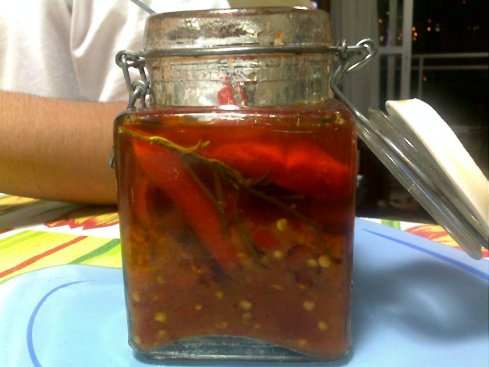
Red peppers in olive oil with rosemary
A few drops of this mixture over your seafood dish will bring up a whole new dimension. But be careful, one or two extra drops and you may literally spoil your dish.
Just in case, keep a bucket of cold water, or of beer, or of white wine, or of whatever you like to use to extinguish a fire, around.




